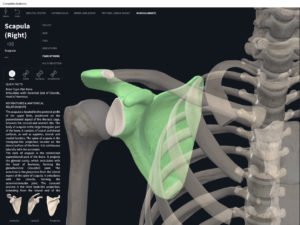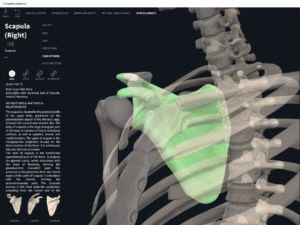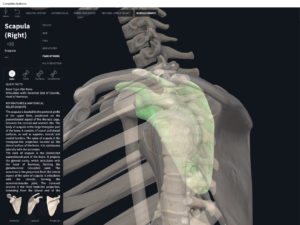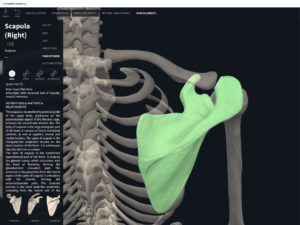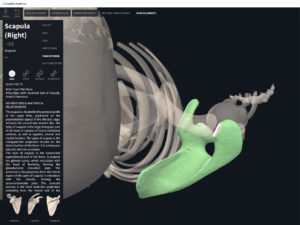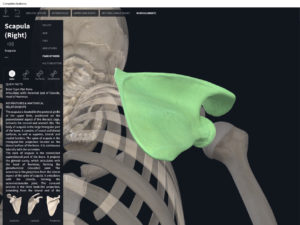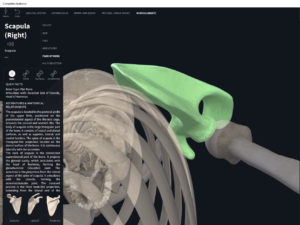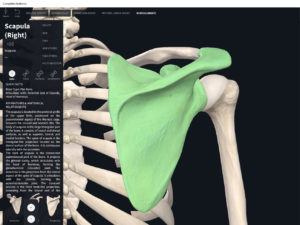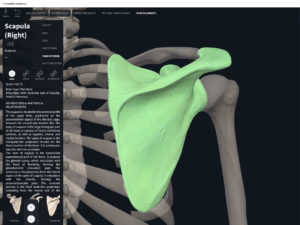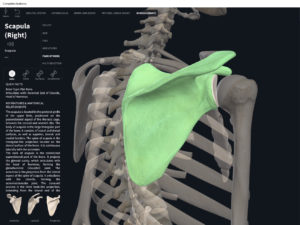Anatomy & Physiology: Bones—Scapula.
Structure.
- The scapula is a triangle shaped flat bone that articulates with the clavicle and humerus.
- It is one of the most complex structures.
- Scapular spine: posteriorly, is a prominent/obvious ridge running diagonally from the medial border to the superior lateral corner to flatten out forming the acromion. Note that this easily orients the scapula’s posterior side as the anterior side has no such ridge, allowing the scapula to lay and move congruently with the posterior rib cage.
- Acromion: a process that is the high point of the shoulder and is easily palpateable. The acromion articulates with the clavicle’s acromial end.
- Glenoid cavity: a slight/shallow depression that articulates with the head of the humerus.
- Coracoid process: (name meaning like a “beak”) seen from the anterior view and inferior to the acromion, it is a substantial hook-shaped projection “pointing” (with an opening) laterally.
- Superior angle.
- Superior border.
- Scapular notch.
- Supraspinous fossa.
- Infraspinous fossa.
- Subscapular fossa.
- Medial border: thinner than the lateral border.
- Inferior angle.
- Lateral border: thicker than the medial border.
Function.
Clinical Significance.
References
Biel, A. (2015). Trail guide to the body: A hands-on guide to locating muscles, bones and more.
Cedars-Sinai. (2018). Vertebrae of the spine. Retrieved from https://www.cedars-sinai.org/health-library/diseases-and-conditions/v/vertebrae-of-the-spine.html
Jenkins, G., & Tortora, G. J. (2012). Anatomy and Physiology: From Science to Life, 3rd Edition International Stu. John Wiley & Sons.
Muscolino, J. E. (2017). The muscular system manual: The skeletal muscles of the human body.
